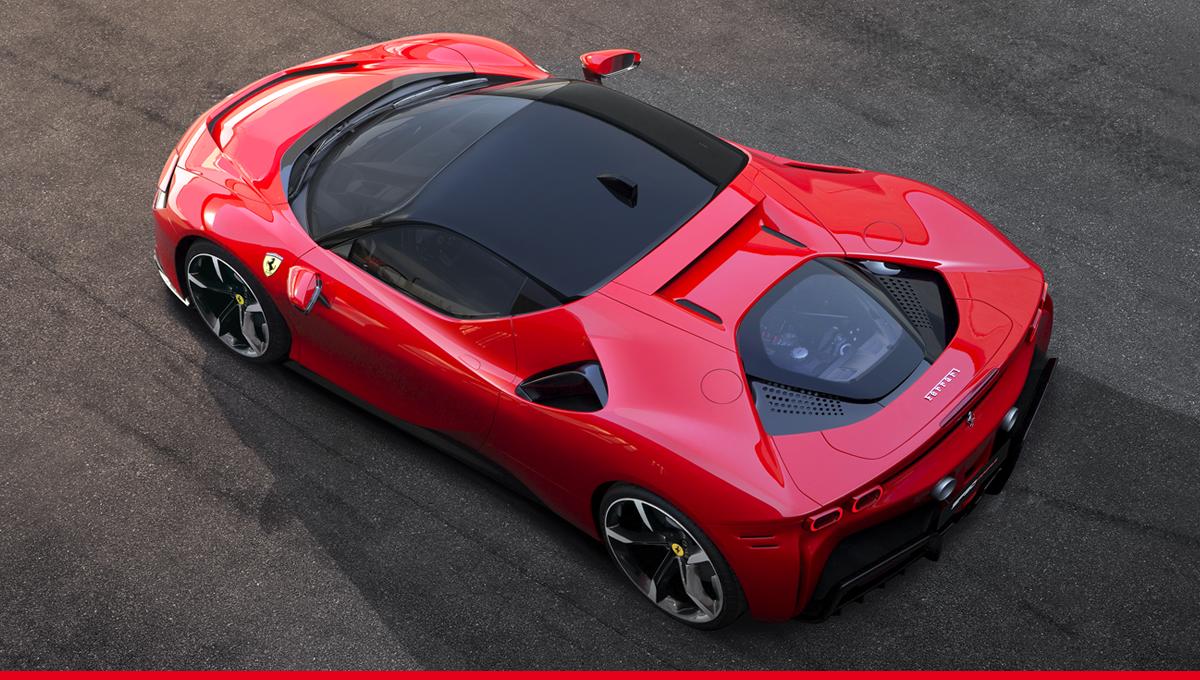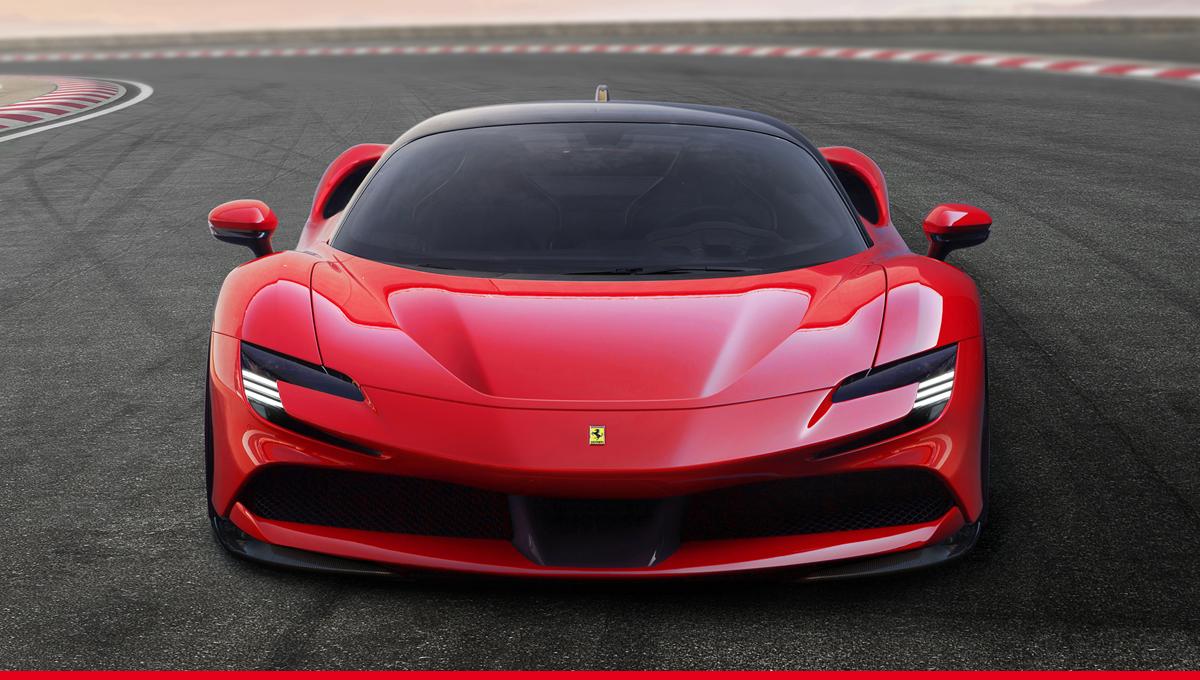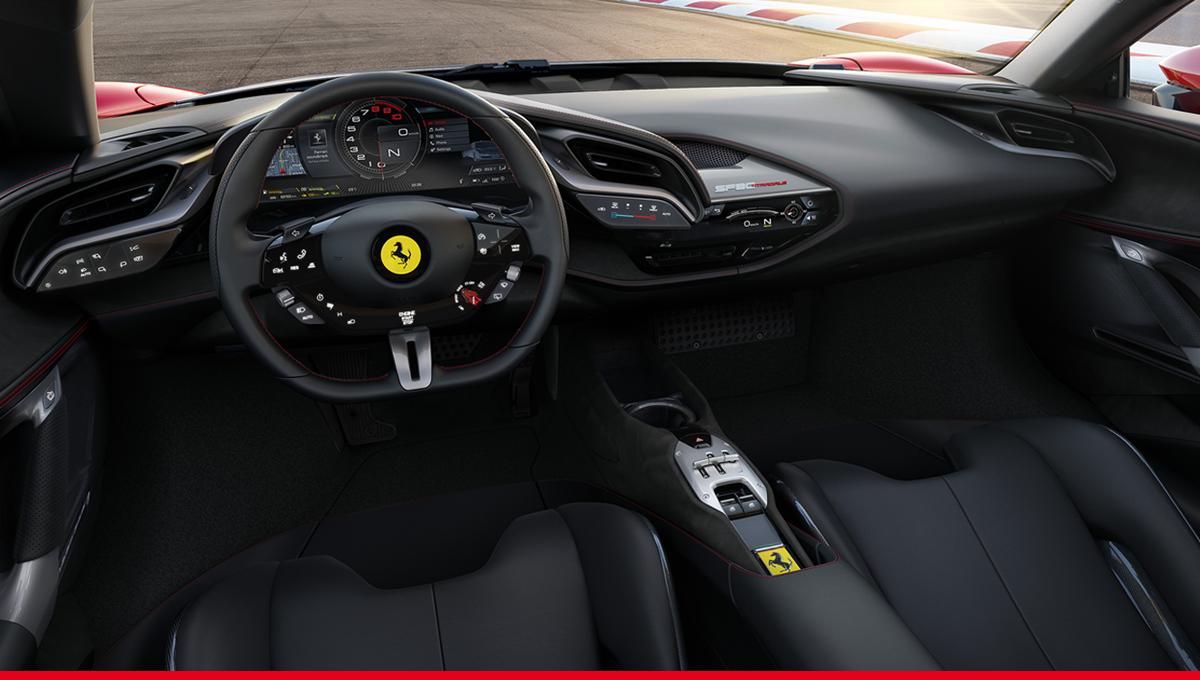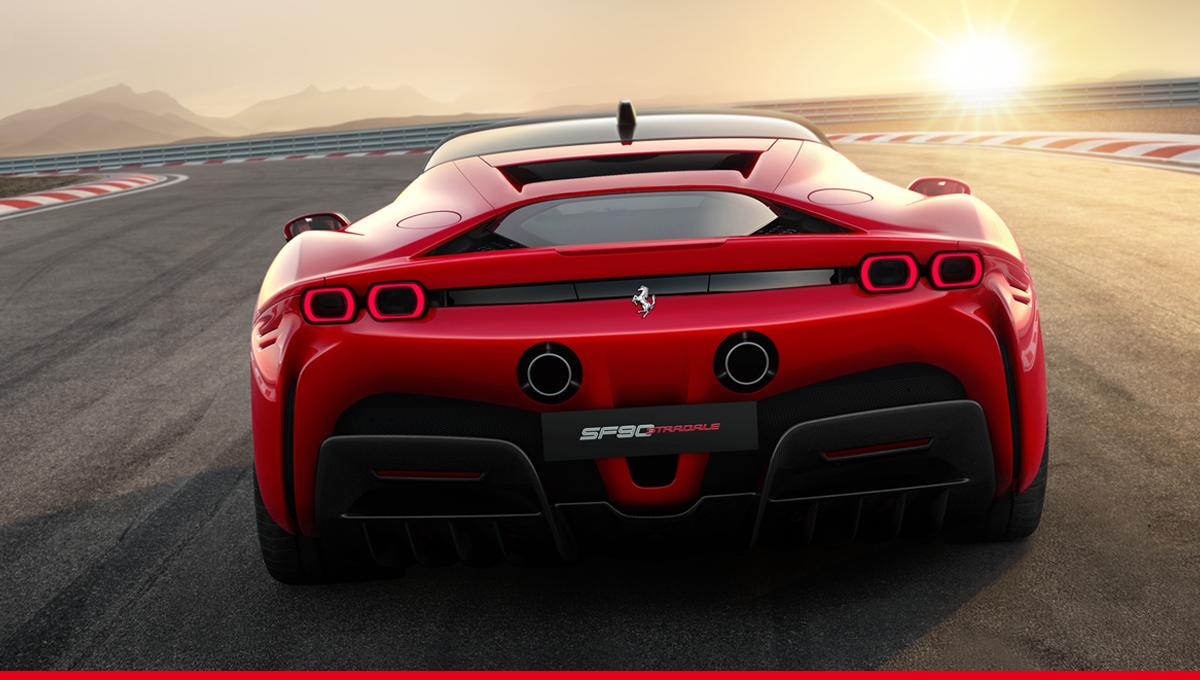



TopGear.com
The company’s first series production PHEV – plug-in hybrid electric vehicle – the new car uses a heavily reworked version of Ferrari’s multi award-winning twin-turbo V8 in combination with three electric motors, one mounted on the rear between the engine and gearbox, and two on the front axle.
Naturally, this signifies the arrival of a whole set of new acronyms, including RAC-e – rotation axis control electric – which takes the concept of torque vectoring to the next level. Ferrari experimented with all-wheel drive back in the mid-1980s, and it’s finally here.
The ICE part of the equation produces 769bhp, the tripartite electric motors adding a further 216 for a total of 986bhp – or a more pleasingly rounded 1000 cv if you go with our Italian brethren. Either way, it’s a whole heap of power, the most any Ferrari V8 has ever ponied up, and it translates to a zero to 62mph time of 2.5 seconds, 124mph in 6.9 seconds, and a top speed of 212mph. All-wheel drive is clearly handy in these circumstances, whether you’re a purist or not.
Ferrari’s powertrain guys may have started with the F154 twin-turbo V8, but the changes are such that technical director Michael Leiters describes it as a ‘totally new architecture, with only minor parts carried over’.
Its capacity has been increased from 3902cc to 3990cc, due to a larger bore of 88mm. Intake and exhaust have been completely redesigned, and the cylinder head is narrower with an all-new central injector running 350bar. Internal fluid dynamics have all been optimised, the turbo assembly is lower, and while the exhaust sits higher – and exits above the rear bumper – the whole engine sits 50mm lower in the chassis for a reduced centre of gravity. There’s a much smaller diameter flywheel, and the exhaust manifold is made of Inconel rather than steel.
A high performance, 7.9kWh lithium ion battery sends power to the three electric motors, and even with the ICE switched off the SF90 can still hit 84mph. Ferrari’s control logic manages the power flows according to whether the driver is feeling holy or hedonistic, and splits it across four different driving modes, controlled by the steering wheel mounted eManettino.
‘eDrive’ is self-explanatory; using the electric front axle only, you’ve got a range of 15 saintly EV miles. ‘Hybrid’ mode is the car’s default setting, switching off the ICE if the circumstances allow, but still giving you access to the whole kit and caboodle if you want it. ‘Performance’ keeps the engine running, to charge the battery, and keeping the car fully lit. And ‘Qualify’ mode wrings everything out of every part of the powertrain, rinsing the three electric motors of their 162kW output, the control logic giving precedence to performance over battery replenishing. Leiters says there’s enough juice in peak power mode to lap any circuit in the world, including the Nürburgring.
The chassis, meanwhile, is all-new, and mixes carbon fibre (in the bulkhead) and high strength aluminium to improve torsional rigidity and create the sort of platform the hybrid powertrain demands. The SF90 Stradale has a dry weight of 1,570kg, pretty good considering all the extra gubbins – 270kg worth of gubbins, in fact.
Ferrari also claims massive progress in terms of aero- and thermal dynamics. The new car generates 390kg of downforce at 155mph, and the engine cover has been kept impressively low to maximise air flow. In fact the whole rear end of this thing is mesemerising.




